Siler City, North Carolina.
For this week’s Travel Tuesday, I have the distinct pleasure of hosting a guest post from the Pot and Pan Handler, Josh Steiner. Last fall, he and I had the opportunity to travel to small town, North Carolina. The photo above features a mural depicting Siler City’s main street in an earlier time. Known for its murals, Siler City has another claim to fame, a tie to Hollywood… but, wait!!! Why am I telling you this? Read on to learn about the little town that is “Balanced for Progress.” Don’t forget to check out the Handler’s blog here.
Welcome travel readers to a surprise Pot and Pan Handler’s guest post benevolently hosted by the travel minded Photo by Johnbo. Today we’ll take a page out of Andy Griffith Show’s Mayberry and take a trip to the American South just a stone’s throw west of Chapel Hill, North Carolina. That is where we’ll find the real life equivalent of the Fictional Mayberry, the quaint and ever evolving Siler City, North Carolina. While there, we’ll put forth the effort to understand the history, culture, food and growing pains of a modern, if rustic, Southern city.

Early Ancient History
Located in Chatham County the small town of Siler City, NC started life like most rural southern towns, as a plantation farm in 1750 this one in particular was owned by wait for it… Plikard Dedrick and Elizabeth Hartzoe Siler, imaginative, I know. Shortly thereafter in an attempt to justify their slave ownership the good southern folk of Siler City erected a Baptist church, where they could learn to be more judgmental while hosting fundraisers and potlucks for fellowship and oh yeah, Jesus.

In 1861 as America descended into the throes of the Civil War, the religious minded folks of Siler City threw their chips in with the confederacy because slavery is noble or as they say in the south: state’s rights. It is still called the war of northern oppression after all, at least south of the Mason Dixon Line. A company of volunteers calling themselves the Chatham Boys drilled there until they eventually became the more formal sounding Company G of the North Carolina Regiment. Would a confederacy by any other name be as hateful?
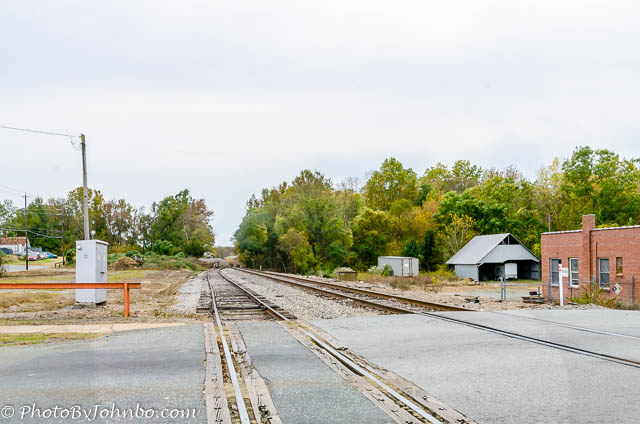
Connecting the divide
By 1884, Siler City became a hub on the railroad; the land of which it was built was of course generously donated by the Silers. That railroad attracted a large tobacco warehouse and made possible the move of the post office to the now more lucrative Siler station. Soon followed by the building of a grist mill, merchandise store, hotel and blacksmith shop. Siler City was growing up.
1887 would see the first school built in Siler City, which is apparently the straw that broke the proverbial camel’s back, as the North Carolina General assembly then incorporated the small town of Siler City. By 1890 Siler City’s growth was notable as the town was inhabited at that time by 254 people.
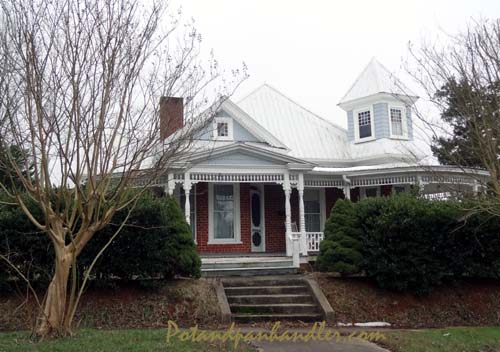
Architecture, porches and growth
With the exploding population came industry, including manufacturing, milling, a bank and more importantly the telephone arrived in 1902. The prosperity enjoyed by Siler City continued into the twentieth century and by 1910 the population had swelled to 440. This growth would continue as the train depot and phone service made the little city that could a premiere destination that attracted Doctors, lawyers, real estate developers, bankers, builders, and businessmen. This influx of people would result in Siler City’s population again doubling to 895 by 1910.
With the population came wealth and with the wealth came architecture. Not just Colonial, but Colonial Revival, Gothic, Queen Anne, Tudor Revival, Four Square; basically anything with a large and or wrap around front porch.
Although the depression slowed the growth of Siler City, the city’s popularity resurged in the 1930’s. Cars and infrastructure such as roads, sewers and plumbing made it possible for the residents to move farther away from the city center and begin building Craftsman bungalow homes that remained popular until the Ranch style homes became the go-to style after world war II.
Industrialization was rampant and by 1937 there was furniture manufacturing, meat and poultry processing, hosiery, lingerie, and textiles all within the city limits. With industrialization came more people. The rapid growth of Siler City continued after WWII again doubling the population from 2,501 to 4,455 by 1940.

What’s your beef?
Like all Americans the good folks of Siler City, like to eat and love to drive. With this in mind in 1946 the Johnsons opened up Johnson’s hamburgers with a young Claxton Johnson standing outside to take curbside orders from people in cars. You can still find Claxton Johnson there today as he carries on the legacy of his father before him, slanging prime beef burgers topped with murderous amounts of Velveeta on a cheap industrial bun.
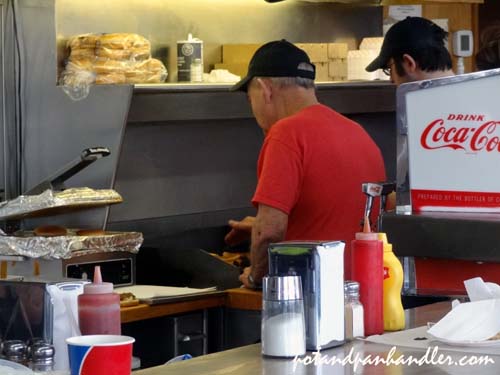
It is an unexplainable mystery as to how Johnsons manage to get fresh prime beef every day, beef that otherwise all gets scooped up by trendy steak houses, not tiny roadside burger dives. However they manage to get prime beef, the locals are appreciative and are prepared to wait in a daily line to get them.

If you want to get one, you better go early, because they close as soon as they sell out of burgers and that can happen pretty quickly. Hell they’re so successful they don’t even bother opening on Sundays or Mondays, not too shabby for a burger dive.
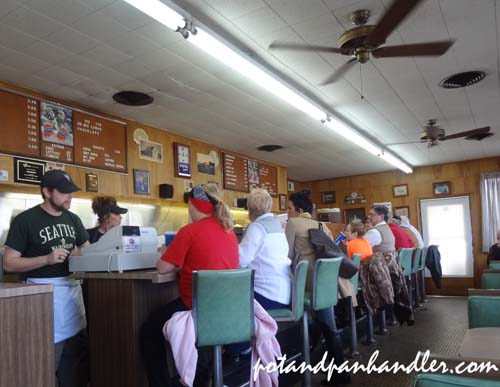
Siler City’s respect for beef could not be contained in one burger dive however, so in 1948 the Carolina Stockyards was established. Henry and Howard Lee Horney bought the stockyard in 1950 and built it into the largest stockyard in the state and eventually the third largest stockyard on the East coast. Home to weekly cattle auctions, they move as much as 86,000 head of cattle a year at a street value of 40 million dollars.

The Horneys realized that all that beef demanded a restaurant be opened, ranchers had to eat after all and the cattle auction takes up a good chunk of a day. So they opened a restaurant on the premises, where they get their own cattle from the auction, process it next door and serve it to hungry ranchers and whoever else braves the smell.

Like Claxton Johnson’s Burger dive, Carolina Restaurant at the Stockyards is still serving burgers today. And again much like Johnson’s burgers, Carolina Stockyard Burgers are topped with an artery clogging amount of processed Velveeta and again served on a cheap industrial bun. Like hot dogs and Philly cheese steaks, burgers are one of the few foods that can get away with processed cheese and cheap bread and still come out delectable, especially when served with hand cut fries or onion rings.

Do yourself a favor and order your fries with their homemade ranch, like Chef Vivian Howard says, “If there is one thing the new Southerner likes more than pork it’s ranch dressing.” That’s the kind of respect the Carolina Stockyards, treats their ranch with, and I for one appreciate the effort.

Meanwhile back at the ranch
Siler City’s growth continued which prompted the Horneys to move the stockyard and restaurant to their current location slightly outside of Siler City in 1972. The same year that Frances Bavier who played Aunt Bee on The Andy Griffith Show retired and moved to Siler City. She once told a reporter “I fell in love with North Carolina, all the pretty roads and trees.” The honeymoon was short lived however, and she lived a reclusive life, until she died in 1989 and was buried in Oakwood Cemetery, follow the pickle jars to her final resting place.
By 1997, work at the chicken processing plants located in Siler City had caused a major influx of Spanish speaking workers. With them came the big box stores, fast food burger joints, fried chicken, BBQ chains and Taqueiras which now dot the outskirts of Siler City, making it feel less like fictional Mayberry but more like suburban anywhere, USA.
In 2004, the Stockyard was purchased by Ray and Robert Crab with the help of several investors and they continued the proud tradition of owning the largest stockyard (as well as hand cut fries). 10 years later in 2014, tiny Siler City, is still the biggest city in Chatham County with more than 50% of the population speaking Spanish in the home. You can’t hide from diversity not even in Siler City, that dear readers is the changing face of the American South. I wonder how Andy Griffith and peers would’ve tackled immigration in Mayberry? I’d like to think that they’d embrace the change, much like they did in Siler City, the real life Mayberry.
Included at no extra charge! Siler City Galleries. Click on an image in a gallery to enlarge it and to scroll through the gallery.
Gallery 1 – Architecture
Gallery 2 – Johnson’s burger dive
Gallery 3 – Carolina Stockyards Restaurant
Gallery 4 – Siler City Murals

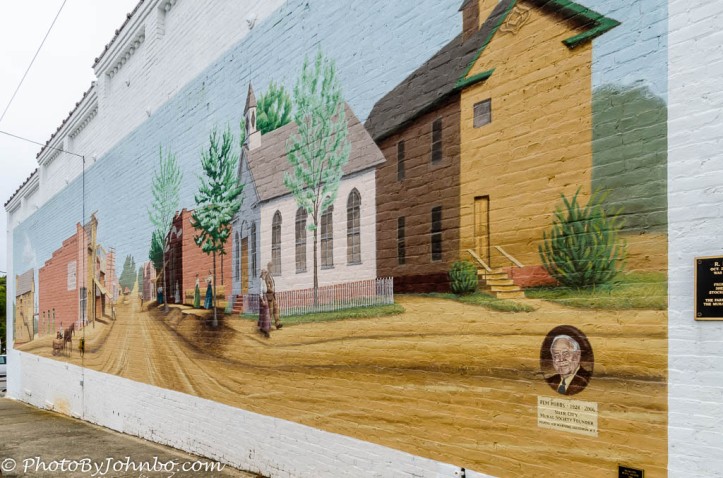





















Thanks for the opportunity to blog on your travel site!
You are most welcome! We shall do it again!
[…] guest posts for each other. One of my most viewed posts to date was one that he wrote in 2016, Changing the Face of the American South. I don’t know why it’s so popular, but I get about five views per […]
[…] viewed far and away more times than any other blog post on my site. I attribute it to the title, The Changing Face of the American South: Siler City, NC. What I find most interesting is that its first four years of publication averaged about the same […]